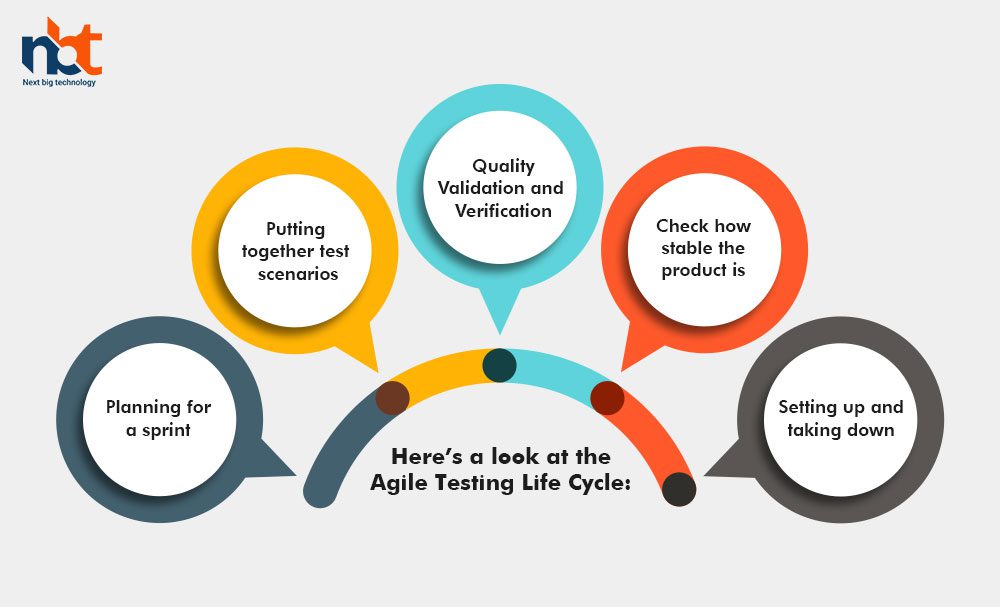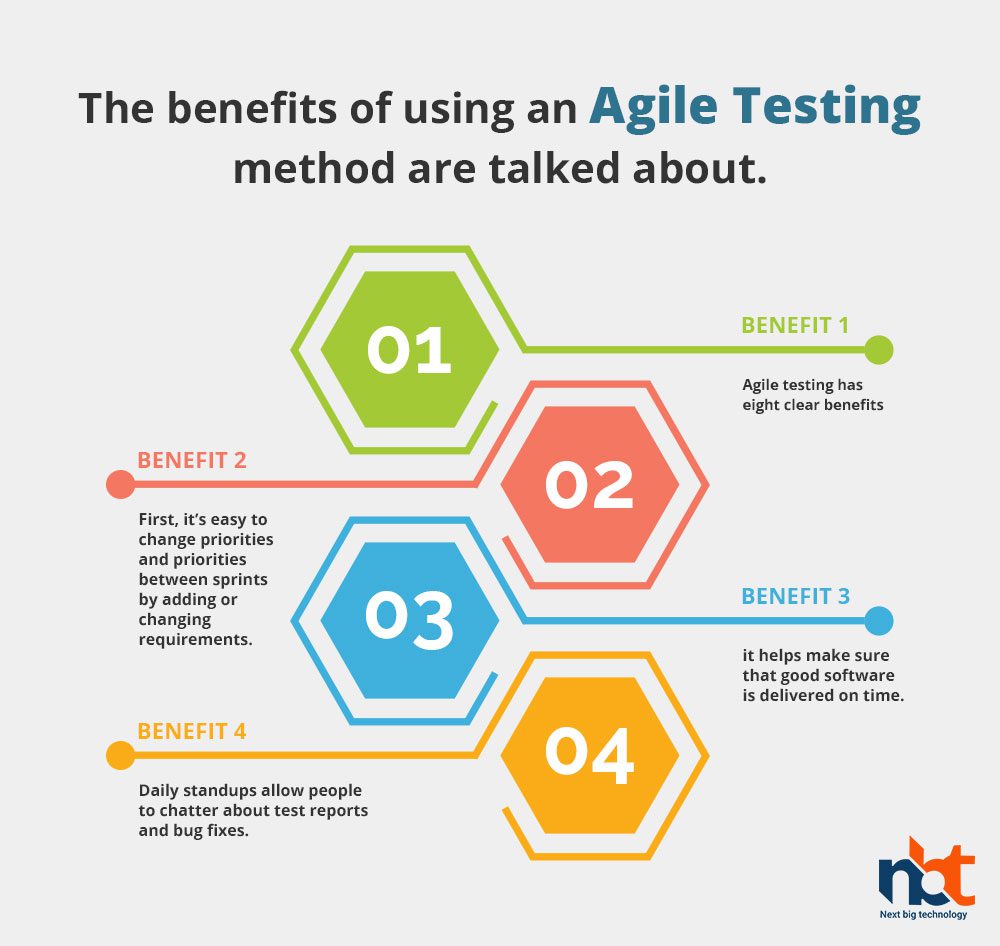We live in a time when there is a lot of competition. Businesses need resources they can use to keep costs low and quality high while making things in shorter and shorter amounts of time. Companies worry about how reliable software is, how to fix bugs before they affect users, and when to release software.
Because the digital exemplar is constantly changing, businesses that are flexible enough to keep up with the latest innovations and trends stand to gain.
The software testing industry is known for being very disorganized, which makes it hard to get everyone on the same page and leads to lower standards for quality, turnaround time, and budget. In a situation like this, the agile method is what saves the day.
Based on a survey of development experts, the Statista study shows what percentage of developers worldwide have adopted the agile development strategy and continuous integration (CI) practices between 2015 and 2018.
In 2018, 91% of respondents showed that their company had adopted an agile development style, and 88% indicated that continuous integration was used regularly.
Table of Contents
What does an Agile test look like?
In the past, it could take months or even a year to finish a project and make it available to end users. This was because the order of abstraction, designing, coding, testing, and deployment had to be carefully planned.
But this plan doesn’t come close to meeting the needs for apps. This is a great place to see how valuable agile development is.
Agile testing is a process that is always going on and can be broken down into several steps. Every shipment has new features and functions that are better than the last. This makes managing products easier and makes customers happier.
Also read : Agile Model for Software Development Lifecycle
Iterative and flexible testing during the life cycle is part of agile development.
On the other hand, traditional methods usually require the user to provide a detailed description of what the software should be able to do. Agile development uses an iterative process that makes it easier to change things.
Here’s a look at the Agile Testing Life Cycle:
Planning for a sprint
Agile techniques are based on breaking large, complicated projects into smaller, easier-to-handle chunks. Sprints are the basic unit of Agile. It’s the time frame that the team has agreed to meet the requirements given to them.
The daily scrum, where team members report on their progress and talk about problems or roadblocks that may slow progress, must be kept up.
Putting together test scenarios
The testing team needs to keep up a rhythm with the development team. The testing team uses the functional requirements document (FRS) and the project design document (PDD) as guides when making test cases.
When you make a test case design, write down the steps you’ll take to build the testing process. These designs validate quality assurance tests and ensure the set procedure is followed. The test cases are written down and given to the QA manager and the developers to review. This helps with Defect Prevention.
Quality Validation and Verification
The goal of this procedure is to make sure that the code produced is reliable. When the development is done and ready to be tested, QA starts. The testing is done agilely by a team that works together.
Check how stable the product is.
Customers often want to change existing features, add new ones, or even start over with the whole product or idea. Agile is often called “iterative development,” which means that changes to the project’s scope can be made at any time without making the process more complicated.
Even though this gives a lot of freedom regarding what features can be added or taken away during development, knowing and controlling the required flow is essential to ensure the final product is stable.
The testing team’s job is to check the changes to the requirements and keep things running smoothly.
Setting up and taking down
The human and automated test cases are run after new user stories are added to the agile development process. This is done to make sure that only high-quality products are shipped.
How do you define Agile best practices?
The three main ideas behind agile software development are adaptability, maintainability, and high quality. These are some of the best tips for communicating well and efficiently in an Agile team, which will help you understand the ideas behind Agile much faster.
To make our customers happier, we need to work with them.
Customer satisfaction is always the first thing that comes up when talking about Agile. In the traditional development process, customers only get involved once, at the very end, when the project is delivered. This often leaves customers unhappy.
Agile methodologies encourage constant communication between the developer and the end user. This is because customer feedback is so crucial to the success of any product development project. When the team and the customer can talk to each other easily, it leads to more ideas and happier clients.
Work together
Agile’s focus on working together as a team makes projects go well.
The people on an agile team need to work together better by improving their coordination, communication, willingness to help, and willingness to work together. Collectively, agile teams may be able to make the kind of brave, forward-looking decisions that lead to better results.
People who work hard
Encouragement helps people think of new ideas. It’s an essential part of any business. A person who wants to do a good job every day has a goal in mind and is committed to their job. Agile teams full of energy are suitable for any business, and the speed of their work is directly related to how much they care.
A group of people who work together to do things
Agile software development depends on teams that work together and run themselves. Teams that can self-organize can decide how to finish tasks and who will take on specific responsibilities. They divide their work into pieces that are easy to handle and finish it all in the time allowed for a sprint.
The benefits of using an agile testing method are talked about.
The essential part of ensuring that Agile testing for a product works is to have a team that has the basic skills of an Agile tester and can build a culture of self-organization and independent thinking.
Agile testing has eight clear benefits:
- It’s more flexible.
- It can be used more than once.
- It’s fast.
- It’s acceptable.
- It makes better products.
- It makes everyone on the team happier.
First, it’s easy to change priorities and priorities between sprints by adding or changing requirements.
When the jobs are split up, there is more clarity, which helps keep mistakes from happening.
With this feature, you don’t have to stick to broad standards. Instead, you can focus on your most recent customers’ specific needs and wants.
This method works better because only small pieces of code need to be tested to find bugs and problems.
it helps make sure that good software is delivered on time.
Before a program is released, it is essential to get feedback from stakeholders and end-users to ensure it meets their needs.
Agile principles depend on keeping things as simple as possible so that team processes like Scrum meetings and development methods can work well.
Daily standups allow people to chatter about test reports and bug fixes.
In the end, since Agile is the preferred framework, improving conditions will lead to a happier staff that can do a better job of making clients want to work with them. This article will try to talk about all parts of Agile testing and how they help make the result better.
Thanks for reading our post “Agile Testing Methodology – Life Cycle, Benefits, and Best Practices”, please connect with us for any further inquiry. We are Next Big Technology, a leading web & Mobile Application Development Company. We build high-quality applications to full fill all your business needs.






















